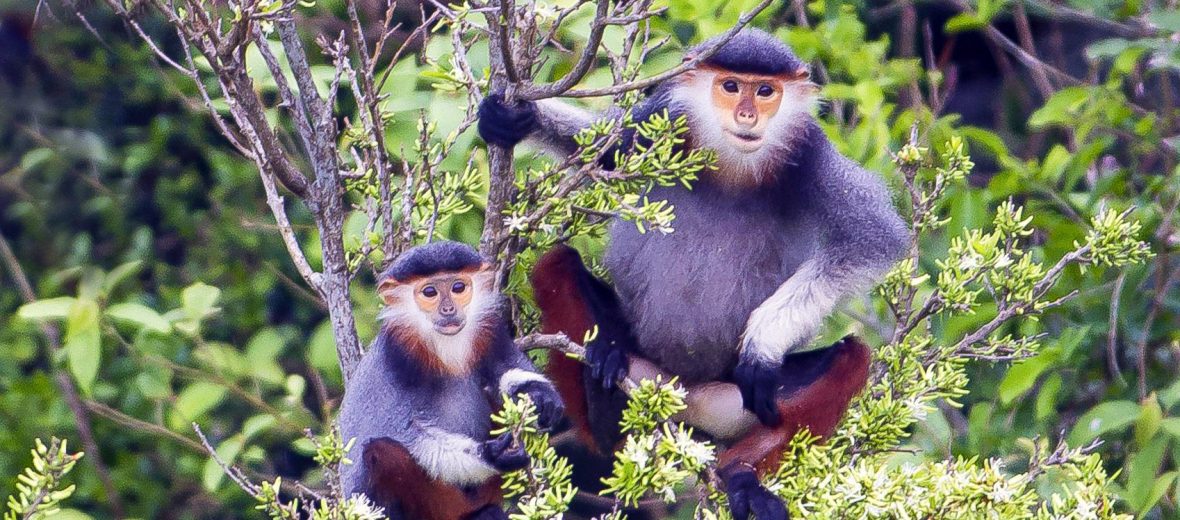
The red-shanked douc can only be found in Cambodia, Laos, and Vietnam. These primates are an Old World (monkeys hailing from Asia or Africa) creature that dwells in the mid to upper levels of the forest canopy in mountainous to lowland terrains, semi-deciduous, primary, and secondary rainforests. Unfortunately, due to habitat destruction at the hands of urban and suburban developments, mining, agriculture, and dams; development of roads that divide their territory and cause the risk of vehicle strike (being hit with vehicles); hunting; and trapping, these primates are listed as Critically Endangered by the IUCN. Their numbers are also decreasing.
First the Stats…
Scientific name: Pygathrix nemaeus
Weight: Up to 25 lbs.
Length: Up to 32 inches, plus up to a 29 inch tail
Lifespan: Up to 25 years
Now on to the Facts!
1.) A group of monkeys is called a barrel, cartload, troop, tribe, or wilderness.
2.) These monkeys are diurnal (active during the day).
3.) Red-shanked doucs are arboreal (spend their lives in trees).
4.) These social primates exist in troops of up to 50 individuals, but typically up to 15 is more common.
5.) The red-shanked douc troop is run on a patriarchal hierarchy, where adult males are dominant.
But wait, there’s more on the red-shanked douc!
6.) When startled, they either flee silently or they sound alarm calls and slap the branches of trees with both their hands and feet.
7.) Their diet consists of young leaves, buds, flowers, bamboo shoots, figs, petioles, and seeds.
Did you know…?
These critters are capable of jumping up to 20 feet, from tree to tree!
8.) Being polygynous, males will mate with more than 1 female.
9.) The mating ritual includes: raising their eyebrows and then lowering them, extending their jaw forward, and head-shaking. The female will reciprocate via lying face-down on a branch, and eyeing her suitor by looking over her shoulder.
10.) Females undergo up to a 190 day gestation (pregnancy) that yields a single infant.
Now a Short Red-Shanked Douc Video!
Be sure to share & comment below! Also, check out the Critter Science YouTube channel. Videos added regularly!
Want to suggest a critter for me to write about? Let me know here.



